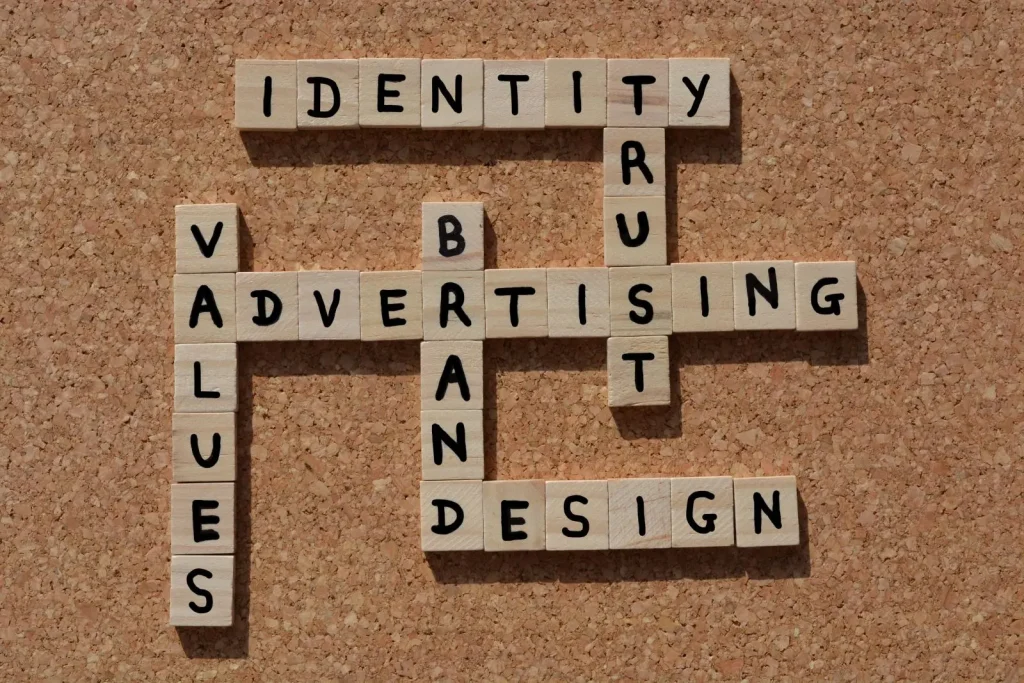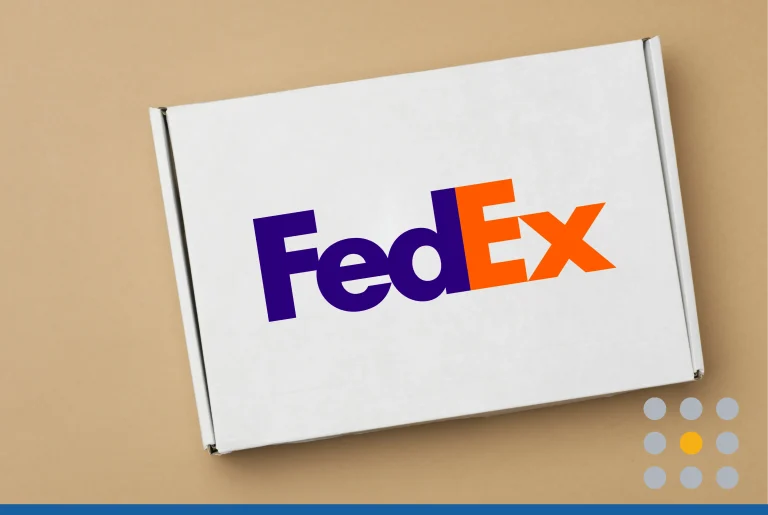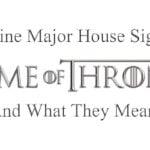You can’t miss a strong brand identity. Some companies are instantly recognizable by their logo and branding alone.
Imagine a basketball player mid-jump. Imagine his legs spread wide and his arms outstretched, the front hand pushing the basketball towards a net you can’t see, but you know is close. What colors did you imagine when you created this image in your mind? Was it red and black?
No, we can’t read minds. But we do know that the Jumpman logo and brand identity are one of the strongest in the world. Nike and the Air Jordan team make sure that any time you see their logo, it follows strict color, sizing, and placement guidelines. They’re not the only ones. Most companies adhere to some version of brand identity guidelines. It drives recognition, loyalty, and trust with consumers.
Don’t worry! Creating your own branding guidelines is not difficult, but it does take time. If you want to build the same kind of loyalty and recognition in your community, here’s how to do it.
Now, think of walking into a store where every detail—from the music to the colors on the walls—feels perfectly in sync. You instantly know what the brand stands for without even seeing the logo. That’s not an accident. That’s the magic of brand identity done right.
Think of brands like Apple, Nike, or Coca-Cola. You recognize them instantly, not just because of their logos but because of the feeling they create. Their design, tone of voice, and values work together beautifully, creating a personality that customers connect with.
We’ll walk you step-by-step through how to create a brand identity that’s clear, easy to remember, and uniquely yours. You’ll learn what makes a strong brand identity, the key elements that define it, and how successful companies use design, strategy, and storytelling to build customer loyalty.
What Is Brand Identity?
First, it’s important to understand the difference between brand guidelines and brand identity. Brand identity is the core of who your company is. It’s your vision for the future, the way you talk and present yourself. Think of your brand identity as the way you think of your personal identity.
It’s defined by what’s important to you, who’s important to you, and what your goals are. Being specific about your brand identity will make it easier for you to be recognized by potential customers. It’s how you stand out among your competition.
Your brand identity is how your company presents itself to the world. It’s the collection of visual, verbal, and emotional elements that together tell your audience who you are, what you stand for, and why you exist.
Your brand identity encompasses everything from your logo and color palette to your brand voice, tone, values, and even the way your customer service team interacts with clients. It’s the personality of your business. The human face behind your products or services.
Brand Identity vs. Brand Image vs. Branding
These three terms often get mixed up, but they each mean something slightly different:
- Brand identity is what you create, the deliberate choices you make to shape how your brand looks, sounds, and feels.
- Brand image is how customers perceive your brand based on their experiences.
- Branding is the process of creating and maintaining your identity and reputation over time.
Think of it this way: Your brand identity is your outfit, your branding is getting dressed, and your brand image is what others think about your look.
Why It Matters
A fitting brand presentation across all platforms can increase revenue by 23—33%. That’s because when people recognize and trust your brand, they’re far more likely to buy from you, according to a Lucidpress report. A clearly defined brand identity gives you a competitive edge, builds emotional connections, and increases perceived value.
In fact, 68% of companies report that brand consistency contributed 10—20% growth to their revenue.
A well-crafted brand identity is the difference between being just another company and being a powerful brand that customers remember and return to.

Why Brand Identity Matters
In a crowded market, your brand identity is your secret weapon. It helps your business stand out, connect with your target audience, and build customer loyalty over time.
Here’s why it’s worth investing in:
1. It Builds Recognition & Trust
A symmetric brand identity creates familiarity. The more people see and recognize your colors, fonts, and tone of voice, the more they trust you. Think about Starbucks—you can spot that green logo a mile away.
2. It Influences Perceived Value
A strong identity signals quality. A luxury fashion brand like Chanel doesn’t just sell handbags; it sells elegance, heritage, and exclusivity—all communicated through its brand design, tone, and storytelling.
3. It Strengthens Customer Loyalty
When your brand stands for something that resonates—sustainability, innovation, or inclusivity—you attract loyal customers who share those values. People buy with emotion and justify with logic, so a great brand identity taps into both.
4. It Impacts Business Performance
Brands with coherent identities outperform competitors by 20%. And companies with strong brand equity enjoy higher customer retention, better Return On Investment (ROI) from marketing efforts, and even greater employee satisfaction.
In short, a strong brand identity doesn’t just look good; it drives results.
What Are Brand Guidelines?
On the other hand, brand guidelines are a set of rules that dictate how your brand identity is expressed. Guidelines are the reason McDonald’s Golden Arches look the same, no matter which country you’re in.
Their position, color, and more are all outlined in the brand guidelines, so they are never altered or incorrect. Designers, copywriters, and marketing teams use these guidelines to create everything from business card designs and advertisements to new promotional swag and website pages.
Without guidelines, any creative professionals who work with your brand will have to guess what your identity is, causing it to potentially change over time.
Basics Elements of Brand Identity
A brand identity includes multiple layers: visual, verbal, and strategic. Let’s break them down:
1. Visual Elements
These are the most recognizable parts of your identity; the face of your brand.
- Logo: Your logo is often the first thing people see. It should be simple, versatile, and reflect your brand’s personality.
- Color palette: Colors evoke emotion. Blue conveys trust (like PayPal), red communicates passion (like Coca-Cola), and green signals sustainability (like Whole Foods).
- Typography: Fonts carry tone. A sans-serif font feels modern and approachable, while a serif font adds sophistication.
- Imagery and graphics: Photography style, icons, and illustrations all help create your visual identity.
2. Verbal Elements
This is your brand voice; how your brand speaks to its audience.
- Tone of voice: Is your communication formal, playful, or inspirational? Your tone should reflect your brand personality.
- Messaging: Your slogans, taglines, and brand story all build emotional connection.
- Customer service tone: How your team communicates with customers also shapes your verbal identity.
3. Strategic Elements
These are the core elements that define your brand’s foundation.
- Brand values: What principles guide your business decisions?
- Positioning: What’s your unique value proposition—the thing that sets you apart from competitors?
- Mission and vision: Why does your company exist, and what change do you want to make in the world?
- Company culture: Your internal culture should reflect the same identity you present externally.
Together, these brand identity elements create a cohesive identity that tells a consistent story across every touchpoint.
What Are Brand Guidelines?
On the other hand, brand guidelines are a set of rules that dictate how your brand identity is expressed. Guidelines are the reason McDonald’s Golden Arches look the same, no matter which country you’re in.
Their position, color, and more are all outlined in the brand guidelines, so they are never altered or incorrect. Designers, copywriters, and marketing teams use these guidelines to create everything from business card designs and advertisements to new promotional swag and website pages.
Without guidelines, any creative professionals who work with your brand will have to guess what your identity is, causing it to potentially change over time.
How to Create a Brand Identity & Style Guidelines
With a clear understanding of the difference between brand identity and brand guidelines, you can begin to create both. Your team can work together to follow these steps, or you can partner with a professional designer to create your brand identity and guidelines.
Either way, it’s helpful to have someone else to brainstorm with. Nothing is more important than your identity as a company.

1. Find Brands With a Strong Brand Identity
The first step is exploration. Find company logos and branding identities that you like. Go outside of your industry and within it. Look at company logos you’ve loved for decades and ones that you’ve found in the last 2 years. Try to identify the common elements that you love from all the logos.
Then, do the same with logos that you don’t like. When you’re working with a designer, it can sometimes be more helpful to provide instructions on what you absolutely don’t want than notes on what you may like.
Once you have a clear direction for company logos and branding that you want to use as inspiration, it’s time to start defining your unique brand identity.
2. Define Your Values
Who are you as a company? What do you care about? What are the reasons customers should pick you over your competition? These are questions that will help define your values. The reason brand values matter is that they help you establish a connection with your target customer. People want to purchase from companies that they feel represent things they agree with.
Values don’t have to be political or controversial. They can be as simple as “We close at 5 sharp every day because we want our employees to get home to their personal life.” Or “We take any and all returns, no matter how long it’s been since the day of purchase.”
The most important thing is that you’re very clear with all your values. They will attract the customer you work with most frequently, so you want to make sure they are honest.
3. Define Your Vision
Your vision is where you want your company to be in the future and what kind of impact you hope to make with your business. This may mean in the world or in your specific community. Like your values, your vision will give people an idea of what your business is all about. It can help connect you to the customers you want and keep you engaged for years to come.
4. Develop Your Visual Brand Identity
This step is the fun part. With your values and your vision clearly defined, plus a list of inspirational brands, you can start crafting your visual brand identity and what can be seen as the face of your company—your logo design. Again, this is something you can do on your own or work with a professional design team to create.
During this phase, you’ll consider everything from your brand colors, typeface, spacing, and more. Spend as much time considering your options as possible. You want to make sure that the colors influence customers the right way, the typeface is legible from various distances, and that you can communicate your values clearly.
Logo guidelines
An incredibly important part of your visual brand identity is your logo. As you finalize your logo, you want to create logo guidelines that are part of your brand guidelines. Logo guidelines will dictate all the normal things like color and font.
But they also go a step further to explain spacing and positioning. If you work with a designer, they’ll give you options to choose from. But if you create your logo and guidelines on your own, remember to consider the different ways your logo will be used.
Test out different options on everything from clothing to stationery to websites and apps. Fit your logo in narrow spaces and wide spaces, small and large. Make sure that no matter where you have to put your branding, your logo looks good.
5. Determine Your Voice
Next, you want to figure out how you sound as a company. This part of your brand identity is more subtle than the visual elements but no less important. Identify words you want to use evenly—words like trustworthy or playful give you a unique identity that customers will gravitate towards. Also, mention words your company doesn’t use. Words like impossible or slang words are often cited in the We Are Not portion of brand guidelines. The voice and tone section of your brand identity may evolve over time, but as you start writing copy for different channels, it’s important to maintain harmony.
6. Finalize Your Branding Guidelines
Lastly, you’ll put all these decisions together in your brand guidelines. Often, the guidelines are no more than a 10-page document that outlines all the details a person would need to know to create an asset for your company.
Often, companies tie identity guidelines together with a brand story. That is, a short narrative about how you came to be, who you are and where you hope to go. Other companies you partner with or sponsor will use this piece of your brand identity to introduce you to their customers. It’s a convenient way to make sure your brand stays consistent to customers old and new.
Building a brand identity isn’t just about design—it’s a strategic journey that aligns your purpose, personality, and presentation. Here’s a step-by-step guide on how to create a brand identity from scratch.

How to Create a Brand Identity from Scratch
Step 1: Research & Competitor Analysis
Before designing anything, start with market research. Study your industry, competitors, and target customers.
Ask:
- What are competitors doing well?
- Where are the gaps you can fill?
- How do customers talk about your industry?
Tools like SEMrush, SurveyMonkey, and Google Trends can help you uncover audience insights and market opportunities.
Step 2: Define Your Target Audience & Positioning
You can’t appeal to everyone—and that’s okay.
Define your target audience based on demographics (age, gender, location) and psychographics (values, interests, lifestyle). Then, identify your brand positioning: where you fit in the market and how you’re different.
Example:
While other sports brands focused on performance, Nike positioned itself around inspiration—motivating athletes at every level.
Step 3: Develop Brand Strategy & Messaging
Your brand strategy acts as your North Star—guiding how your brand behaves, communicates, and evolves.
Define your:
- Brand purpose (why you exist).
- Brand promise (what customers can expect every time).
- Brand values (what you believe in).
- Brand voice (how you communicate).
Craft a compelling brand story that highlights your origin, mission, and impact. Authentic storytelling builds emotional connection and trust.
Step 4: Create a Visual Identity System
Now comes the fun part—bringing your strategy to life visually.
Work with a graphic designer to develop:
- A logo system (primary, secondary, and icon versions).
- Color palette with meaning and flexibility.
- Typography hierarchy.
- Iconography and image style.
Remember, your visual identity should reflect your core identity—not just trends. For example, Airbnb’s logo redesign in 2014 symbolized belonging, tying directly into their brand purpose.
Step 5: Establish Brand Guidelines
A brand style guide ensures brand consistency across every touchpoint—from your website to social media and packaging.
Your brand guidelines should include:
- Logo usage rules.
- Color and typography specs.
- Imagery style.
- Tone of voice examples.
- Dos and don’ts.
This helps everyone, from your marketing team to external partners, maintain a consistent branding experience.
Step 6: Implementation Across Touchpoints
Once your identity is ready, apply it everywhere your brand interacts with customers:
- Website and app design.
- Social media visuals and bios.
- Email signatures.
- Business cards and stationery.
- Marketing materials.
- Packaging and signage.
Consistency across these channels builds trust and recognition over time.
Step 7: Testing & Refinement
Gather customer feedback through surveys, focus groups, and analytics. Monitor engagement rates, click-throughs, and sentiment on social media.
Small tweaks—like adjusting tone or refining color contrasts—can make a big difference in brand performance.
Step 8: Ongoing Brand Management
A strong brand evolves over time. Continuously monitor your brand’s reputation, track metrics, and ensure your team lives up to your brand promise every day.
Your identity isn’t static—it’s a living system that grows with your company and your customers.

15+ Brand Identity Examples & Case Studies
Let’s explore some successful brands with unforgettable identities—and, more importantly, what you can learn from them. Each example highlights how visual elements, brand story, and verbal identity work together to create a powerful, lasting impression.
1. Apple: Minimalism With Meaning
Few brands have mastered simplicity like Apple. From its sleek, monochrome logo to its minimalist packaging and intuitive product design, every detail reflects its philosophy of “less, but better.”
Apple’s brand identity revolves around innovation, creativity, and human connection. The use of white space, simple typography, and emotionally driven ads (like “Think Different”) reinforces the brand’s mission to empower people through technology.
Lesson: A matched brand identity doesn’t need to be flashy—clarity, keeping it in line, and emotional resonance often speak louder.
2. Nike: Empowerment Through Action
Nike’s three words—Just Do It—are arguably the most powerful tagline in history. Its brand voice is bold, motivational, and inclusive, inspiring athletes and everyday dreamers alike.
Visually, the iconic Swoosh logo captures movement and progress, while the consistent black-and-white color palette communicates confidence. Nike’s storytelling blends emotional branding with social relevance, tackling topics like equality, perseverance, and courage.
Lesson: Your brand voice can be a rallying cry. A clear, inspiring message can transform your audience into a loyal community.
3. Starbucks: Building a Sense of Belonging
The Starbucks siren logo, green color palette, and warm typography create an identity centered on comfort and connection. Every cup tells the same story: community, familiarity, and premium experience.
Starbucks also nails its verbal identity, with inclusive, conversational language that feels human and welcoming. Its mission—“To inspire and nurture the human spirit—one person, one cup, and one neighborhood at a time”, aligns perfectly with its in-store experience.
Lesson: A strong brand identity extends beyond visuals—it’s about crafting an experience that feels consistent wherever your customer encounters you.
4. Coca-Cola: Timeless Happiness
Coca-Cola’s red and white color scheme is one of the most recognizable in the world. The script font, consistent logo use, and upbeat messaging all contribute to its legacy of joy, togetherness, and refreshment.
For over a century, the brand has reinforced a single, clear emotional association: happiness. From its nostalgic “Share a Coke” campaign to its global holiday ads, Coca-Cola proves that brand consistency and emotional storytelling stand the test of time.
Lesson: When your brand identity is built on emotion, it can remain relevant for generations.
5. Airbnb: Belong Anywhere
Airbnb redefined travel by focusing on belonging, not just accommodation. Its Bélo logo symbolizes love, community, and adventure—perfectly capturing its brand promise.
The company’s visual identity is warm, human-centered, and approachable, while its messaging focuses on authentic stories from real hosts and guests. Every touchpoint—from its website to its app—communicates openness and inclusivity.
Lesson: A great brand story is about people, not products. Craft yours around shared human experiences.
6. Glossier: Authenticity in Action
Glossier grew from a beauty blog to a cult-favorite skincare brand by putting customers at the heart of its identity.
Soft pink packaging, minimalist typography, and real, unfiltered imagery create a cohesive identity built on transparency and empowerment. The brand’s conversational tone (“Skin first. Makeup second.”) feels like a friend giving advice, not a company pushing products.
Lesson: In the age of social media, authenticity and community can be your biggest brand assets.
7. Tesla: The Future on Wheels
Tesla’s brand identity screams innovation. Its sleek T logo, minimalist color palette, and futuristic messaging align perfectly with its mission to accelerate sustainable energy.
What sets Tesla apart is how its brand strategy merges technology with emotion. It’s not just selling cars—it’s selling a vision of the future. The brand’s direct communication and passionate community of fans make it feel more like a movement than a company.
Lesson: Your brand identity should align with your long-term vision—not just your products.
8. Patagonia: Purpose Before Profit
Patagonia has become one of the strongest eco-conscious brand identities in the world. Its earthy color palette, mountain logo, and authentic messaging reflect its deep commitment to environmental activism.
The company doesn’t just talk sustainability—it lives it. From fair-trade practices to donating profits to environmental causes, Patagonia’s identity is reinforced by action.
Lesson: A powerful brand identity isn’t just what you say—it’s what you do.
9. Lego: Creativity Across Generations
Lego’s identity celebrates imagination. Its bright primary colors and bold simple logo embody playfulness and creativity.
Over decades, Lego has expanded from toys to movies, games, and theme parks—yet its core identity has never changed: sparking creativity in children and adults alike.
Lesson: A strong core identity gives you room to grow without losing your essence.
10. Spotify: Personalized Soundtrack of Life
Spotify’s brand identity is vibrant, fun, and flexible. The green-and-black color scheme, dynamic gradients, and playful copy make the brand feel fresh and alive.
But what really sets Spotify apart is its personalization strategy. From Wrapped year-end summaries to custom playlists, Spotify makes users feel seen and understood.
Lesson: Personalization can be a powerful part of your brand identity, turning customers into fans.
11. Chanel: Elegance & Exclusivity
Chanel embodies timeless luxury. Its minimalist black-and-white color palette, elegant serif typography, and high-contrast visuals all reinforce exclusivity and sophistication.
Every campaign, boutique, and product reflects the same essence: refined simplicity. The result? One of the world’s most enduring luxury fashion brands.
Lesson: For premium brands, less is often more—consistency and restraint communicate prestige.
12. Warby Parker: Smart & Stylish
Warby Parker disrupted the eyewear industry with its blend of affordable luxury and friendly tone. Its clean, modern visuals are paired with witty, clever copy that makes eyewear fun.
From its blue color palette to its socially conscious Buy a Pair, Give a Pair program, everything about Warby Parker feels fresh, relatable, and responsible.
Lesson: Personality matters. Infuse your brand with character to make it approachable and memorable.
13. Mailchimp: Quirky Meets Professional
Mailchimp proves that B2B brands don’t have to be boring. Its brand identity combines bold yellows, fun illustrations, and a playful tone to make marketing approachable.
Even its mascot, Freddie the chimp, reflects humor and friendliness—turning what may be a dry tech service into a lovable brand with a loyal community.
Lesson: Your brand personality should make your audience feel something—even in serious industries.
14. Dropbox: From Utility to Creativity
Originally a simple file-storage service, Dropbox evolved its brand identity to represent collaboration and creativity. Its bright, geometric visuals and friendly tone redefined its image from purely functional to inspiring.
By repositioning itself as a tool for creators, Dropbox strengthened its connection to a new audience without alienating its existing users.
Lesson: Rebranding can unlock growth, as long as it’s guided by your core values and customer needs.
15. Ben & Jerry’s: Activism With a Scoop
Ben & Jerry’s is more than an ice cream company; it’s a voice for change. Its brand identity blends fun and activism, with playful visuals, hand-drawn fonts, and socially conscious messaging.
From climate justice to racial equality, the company’s actions match its words. That authenticity makes it one of the most beloved values-driven brands in the world.
Lesson: When your brand takes a stand, you create deeper emotional connections with your audience.
Bonus: Local & Emerging Brands
It’s not just global giants doing it right.
- Allbirds uses sustainability and simplicity as its design language.
- Oatly leverages humor and rebellion in its packaging copy.
- TOMS built an identity around giving—every purchase helps someone in need.
These smaller brands prove that a well-crafted brand identity doesn’t require a massive budget, just a clear message, consistency, and authenticity.
Key takeaway:
The secret to a great brand identity is alignment, whether you’re a global icon like Apple or an emerging startup like Glossier. When your visuals, voice, and values tell the same story, customers not only remember your brand—they believe in it.

Common Brand Identity Mistakes to Avoid
Even the best ideas can fall flat if your execution isn’t strategic. Avoid these pitfalls when building a brand identity:
- Inconsistency across channels—If your logo, colors, or messaging change from platform to platform, it confuses customers and dilutes trust.
- Copying competitors—Imitation may feel safe, but it kills originality. Instead, focus on your unique story and values.
- Ignoring the target audience—Your brand isn’t for you; it’s for them. Make sure every design and word speaks to your target customers.
- Overcomplicating the design—A cluttered visual identity confuses rather than impresses. Simplicity wins every time.
- Neglecting internal culture—Your company culture should mirror your external identity. Employees are your first brand ambassadors.
Tools & Resources for Brand Identity Creation
You don’t need to do it all alone. Here are some tools to help you craft your effective brand identity:
- Design tools: Canva, Adobe Creative Cloud, Figma.
- Logo makers: Looka, Hatchful, Tailor Brands.
- Brand style guide templates: Notion, Frontify, Milanote.
- Color palette generators: Coolors, Adobe Color Wheel.
- Professional services: Hire a graphic designer or a branding agency for custom strategy and design.
Measuring Brand Identity Success
Once your identity is live, track its performance with metrics that measure awareness, consistency, and loyalty.
Basic metrics:
- Brand recognition and recall.
- Social media engagement.
- Website traffic and conversion rates.
- Customer satisfaction and loyalty.
- Employee alignment and advocacy.
Use tools like Brandwatch, Google Analytics, and Hootsuite to monitor results and optimize your branding efforts over time.
Brand Identity Trends 2024—2025
Branding never stands still. Here are some trends shaping brand identity design today:
- Minimalist luxury: Less clutter, more clarity—especially in luxury brands.
- Purpose-driven identities: Social and environmental impact are at the core of modern brands.
- Dynamic logos: Adaptive logos that respond to context and devices.
- Authentic storytelling: Customers crave realness, not perfection.
- Personalized brand experiences: Using data and AI to create tailor-made content and interactions.
Keeping up with these trends ensures your brand identity feels relevant and future-ready.
Get Started on Your Branding With a Logo
If you’re ready to launch the visual look of your company, consider starting by creating your logo. You may choose to work with a designer to make your logo to exact specifications or create a logo yourself using our custom logo maker.
We are committed to supporting your design needs as you work to establish your brand identity.
Conclusion
Creating a great brand identity is more than just design—it’s a simple strategy that defines how your company is seen, remembered, and loved. When your visuals, messaging, and values work in harmony, you don’t just attract customers—you build a community that believes in your brand.
We’re here to help you get started.
FREQUENTLY ASKED QUESTIONS
What is brand identity in simple terms?
Brand identity is how your business looks, sounds, and feels—the combination of design, tone, and values that represent who you are.
Why is brand identity important for small businesses?
A strong identity helps small businesses stand out, attract loyal customers, and communicate professionalism, even with limited marketing budgets.
How do I start building a brand identity?
Start with research, define your mission and values, then create a visual and verbal identity that reflects your purpose.
What’s the difference between brand identity and brand image?
Your brand identity is what you create intentionally; your brand image is how the audience perceives it based on their experience.
How do I maintain brand consistency?
Use a brand style guide that outlines your visual and verbal rules—and ensure everyone in your company follows it.
How often should I update my brand identity?
Review your identity every few years or when your business evolves significantly, but always keep your core identity intact.
Can I create a brand identity without hiring a designer?
Yes, online tools make it easier than ever. But for a cohesive and professional identity, a designer adds real value.
How can I measure if my brand identity is successful?
Track recognition, engagement, and customer satisfaction. Consistent growth in these areas means your identity resonates.
What makes a great brand identity?
Clarity, consistency, and authenticity. When your visuals, tone, and values align, customers naturally connect with your brand.
How do strong brands build customer loyalty?
By staying true to their brand promise, delivering value consistently, and emotionally connecting with their audience through story and experience.






